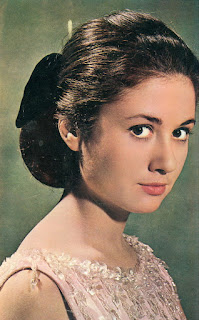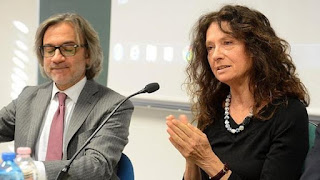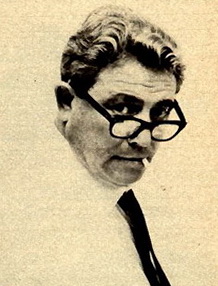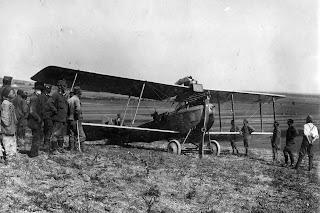Eurovision win at 16 launched successful career
 |
| Gigliola Cinquetti was only 16 when she won Eurovision in 1964 |
She took the prize in Copenhagen in 1964 with Non ho l'età (I'm Not Old Enough), with music composed by Nicola Salerno and lyrics by Mario Panzeri.
Just 16 years old at the time, she scored an overwhelming victory, gaining 49 points from the judges. The next best song among 16 contenders, which was the United Kingdom entry I Love the Little Things, sung by Matt Monro, polled just 17 points.
Non ho l'età became a big hit, selling more than four million copies and even spending 17 weeks in the UK singles chart, where songs in foreign languages did not traditionally do well. It had already won Italy's prestigious Sanremo Music Festival, which served as the qualifying competition for Eurovision at that time.
Italy had finished third on two occasions previously at Eurovision, which had been launched in 1956. Domenico Modugno, singing Nel blu, dipinto di blu (later renamed Volare) was third in 1958, as was Emilio Pericoli in 1963, singing Uno per tutte.
Watch Gigliola Cinquetti's performance at Eurovision 1964
None of the country's entries went so close until Cinquetti herself finished runner-up 10 years later with Sì, which was a creditable effort given that it was the 1974 contest, staged in Brighton, that introduced the world to ABBA, whose song Waterloo went on to become one of the best-selling singles of all time.
 |
| Abba, the Swedish pop phenomenon whose emergence at Eurovision in 1974 denied Cinquetti a second win |
Sales suffered at home in Italy, however, because of the decision by state broadcaster RAI to ban the song from being played on TV and radio for a month out of fears that it would influence the upcoming referendum on the divorce law. The electorate were being asked to vote 'sì' or 'no' on whether to repeal legislation passed three years earlier that lifted the ban on divorce and RAI were worried that the repetition of the word 'sì' in the song would subliminally influence the vote.
Cinquetti had been born into a wealthy family in Verona. After attending art school, she began to study architecture and philosophy at university but her success in 1964 led her to concentrate more and more on her music career, in which she enjoyed considerable success.
She won Sanremo again in 1966, accompanied by Domenico Modugno in a duet, Dio come ti Amo - God how I love you - and had a series of hits in Italy before Sì reinforced her fame outside Italy.
In the 1990s, Cinquetti's career took a different direction. She co-hosted the 1991 Eurovision Song Contest, staged in Rome, alongside Toto Cutugno, who had become Italy's second winner in Zagreb the year before, and performed so impressively she was encouraged to pursue an interest she had already expressed in becoming a television presenter.
 |
| Gigliola Cinquetti pictured with her husband, the journalist, writer and director Luciano Teodori |
More recently, Cinquetti has revived her singing career, embarking on a number of concert tours and recording new material. One year ago today she released 20:12, her first studio album for 20 years, which included a hit single, Teardrops in an ocean, and a cover of the Rolling Stones 1966 single, Lady Jane.
She has been married since 1979 to the journalist, writer and director Luciano Teodori. They have two children, Costantino and Giovanni.
Travel tip:
Verona's famous Roman amphitheatre, the Arena, stages an annual Opera Festival, which came into being in 1913 when a local tenor, Giovanni Zenatello, suggested to Ottone Rovato, a theatre manager in the city, that the 100th anniversary of the birth of the composer Giuseppe Verdi be commemorated with an open-air performance of Aida within the setting of the Arena. It was such a popular and successful production that the venue soon became an established fixture on the opera calendar with stars queuing up to appear there.
 |
| Terracina's Duomo in Piazza del Municipio |
Gigliola Cinquetta says she met the man who would become her husband, Luciano Teodori, on the beach at Terracina, on the Tyrrhenian coast between Rome and Naples. A pleasant resort town notable for a long sweep of sandy beach, it also has an interesting historic centre notable for an 11th Doumo in Piazza del Municipio, built on the site of a Roman temple to Augustus. The cathedral has a broad 18-step staircase leading to an entrance sheltered by a vestibule supported by columns resting on recumbent lions, and a Gothic-Romanesque campanile featuring small columns that echo the design of the vestibule.
More reading:
How Sanremo helped launch the career of Italian superstar Eros Ramazotti
Sixties star Rita Pavone conquered America
How a girl from an intellectual background in Venice became pop sensation Patty Pravo
Also on this day:
1856: Death of Sicilian patriot Francesco Bentivegna
(Photo of Terracina Duomo by MM via Wikimedia Commons)
Home











